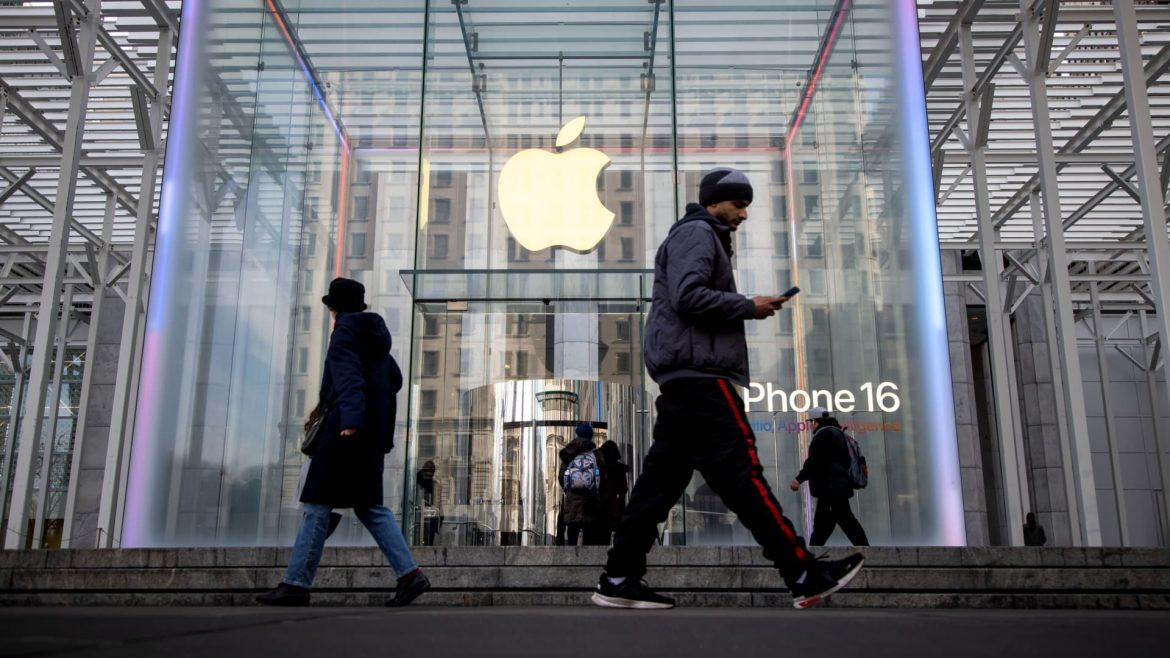Navigating the Pre- and Post-Market Volatility: Key Movers and Market Sentiments
Stock markets often reveal sharp movements outside regular trading hours, serving as a preview of investor sentiment and economic factors that may shape the upcoming sessions. Recent premarket and after-hours trading have spotlighted several major names—Apple, Tesla, Intuit, Ross Stores, and others—with substantial price swings tied to company announcements, broader economic news, and geopolitical developments.
—
Ross Stores: A Retail Rollercoaster
Ross Stores has emerged as one of the most volatile players recently. The stock plunged more than 12% in premarket trading and over 11% after hours following the company’s withdrawal of its full-year guidance. This rare move to retract earlier forecasts signals uncertainty in the retail sector, likely driven by changing consumer demand patterns and cost pressures.
The off-price retailer now projects its second-quarter earnings per share (EPS) to range between $1.40 and $1.55, a cautious stance compared to analysts’ previous expectations. Despite a recent beats in quarterly EPS ($1.48 versus a $1.40 forecast), the downbeat guidance raised concerns among investors. Heightened options activity around Ross Stores—with put options leading—reflects a market pricing in continued downside risk.
This turbulence in retail is also a bellwether for broader spending trends, particularly in the discount and off-price segments which had previously benefited from cost-conscious consumers. The cautious tone from Ross could signal a slowdown or challenges in maintaining growth momentum.
—
Apple: Navigating Tariff Threats and Supply Concerns
Apple’s shares declined around 3% in premarket trading after statements by former President Donald Trump indicating potential tariffs of at least 25% on iPhones manufactured outside the U.S. Given Apple’s heavy reliance on China for production, such tariffs would materially affect the company’s cost structure and pricing power.
Despite the fall, Apple maintains significant global demand with recent news of more than 6% gains in certain sessions owing to easing trade restrictions and favorable market sentiment around its product ecosystem. Nonetheless, tariff threats underscore the ongoing geopolitical risks tech giants face in a shifting global trade environment.
Apple’s stock movements also parallel broader tech market concerns, including regulatory scrutiny and supply chain bottlenecks, which contribute to daily volatility.
—
Tesla: Overcoming Competitive Pressures and Investor Optimism
Tesla’s stock movement reflects a dynamic interplay of competitive challenges and bullish investor sentiment. While the company faces increasing competition from Chinese EV makers such as BYD—who recently outsold Tesla in Europe for the first time—Tesla’s shares rose 1.3% premarket, buoyed by Wedbush’s characterization of Tesla as “the most undervalued AI play in the market today.”
Tesla’s rise of over 7% in some sessions amid declining China sales speaks to strong investor faith in Tesla’s innovation and market positioning beyond traditional auto metrics. The stock’s sensitivity to news—whether from sales data, regulatory developments, or broader EV market trends—makes it a focal point for traders.
—
Intuit and Workday: Software Sector Fluctuations Amid Earnings Reports
Intuit, the parent of TurboTax, and Workday continue to attract attention due to their reported earnings and forward guidance. Intuit slipped nearly 6% following weaker-than-expected outlooks, echoing a cautious tone among software providers impacted by macroeconomic uncertainty.
Workday’s trading has mirrored similar volatility, with both companies reflecting the broader technology sector’s sensitivity to growth rate expectations and spending trends in enterprise software.
—
Broader Market Context and Sectoral Insights
Other notable movers include Deckers, IonQ, and Guardant Health, illustrating that volatility is not confined to a few names but scattered across industries, from retail and tech to healthcare and emerging technologies.
Market indices such as the S&P 500 have been subdued, with three consecutive down sessions ahead of major holidays like Memorial Day, underscoring a cautious investor environment. This period is often marked by lower liquidity and increased sensitivity to news events.
The divergence in stock performances—big techs like Apple and Tesla facing tariff and competitive threats but occasionally rallying on innovation optimism, retailers like Ross adjusting guidance in response to real-time sales data—illustrates the complexity of interpreting pre- and post-market moves.
—
Conclusion: Reading Between the After-Hours Lines
Premarket and after-hours trading provide crucial insights into market sentiment and probable trends for regular sessions. Recent activity highlights a mix of optimism and caution: Ross Stores’ guidance withdrawal points to potential retail softness, Apple confronts geopolitical tariff risks amid ongoing supply chain adjustments, and Tesla’s valuation incorporates both competitive headwinds and disruptive technology hopes.
For investors and market watchers, these moves signal the importance of monitoring earnings updates, geopolitical developments, and sectoral shifts closely. The market’s pulse before the bell often foreshadows the battles to be fought during standard trading hours, making this window a strategic vantage point for informed decision-making.





